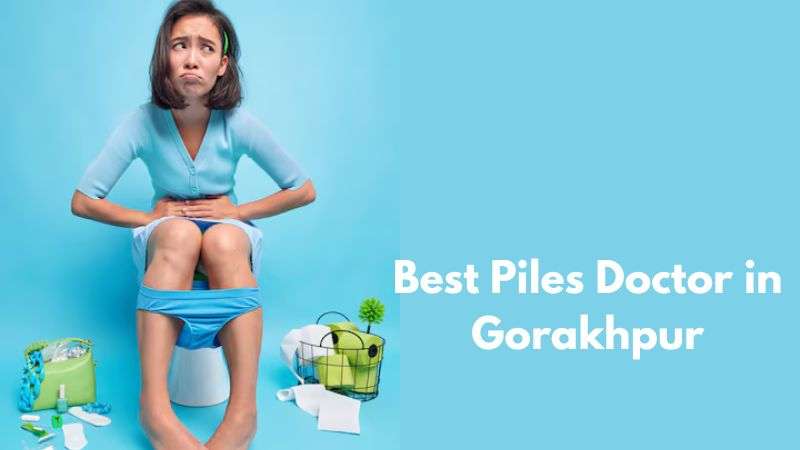Are you in search of the best piles doctor in Gorakhpur to address your discomfort and find relief from this common yet bothersome condition? Look no further! In this blog post, we will explore what piles are, their symptoms, causes, types, treatments available, and essential factors to consider when choosing the right specialist for your needs. Let’s dive into the world of piles and discover how you can get back on track to optimal health with the help of a trusted expert.
What are Piles?
Piles, also known as hemorrhoids, are swollen and inflamed blood vessels in the rectum and anus. These can cause discomfort, pain, itching, and sometimes bleeding during bowel movements. The condition can vary from mild to severe, impacting one’s quality of life. Internal piles develop inside the rectum and may not be visible externally. On the other hand, external piles form around the anal opening and can be felt or seen outside the body.
Piles occur when there is increased pressure on the blood vessels in the pelvic area, leading to swelling and inflammation. Factors like chronic constipation, straining during bowel movements, pregnancy, obesity, and a sedentary lifestyle contribute to their development. It is essential to seek medical advice if you experience symptoms like rectal bleeding or persistent discomfort to receive an accurate diagnosis and appropriate treatment tailored to your needs.
Piles symptoms
Piles, also known as hemorrhoids, can cause a range of symptoms that may vary in severity from person to person. One common symptom is rectal bleeding during bowel movements, which can be alarming and should not be ignored. This blood may appear on toilet paper or in the toilet bowl.
Another symptom of piles is itching around the anal area, which can be uncomfortable and persistent. Patients may also experience pain or discomfort during bowel movements due to swollen veins in the rectum. In some cases, individuals with piles may feel a lump or swelling near the anus.
Constipation or difficulty passing stools is another potential sign of piles. This condition can lead to straining during bowel movements, exacerbating existing symptoms. If you notice any of these symptoms persisting or worsening over time, it’s important to consult a healthcare professional for an accurate diagnosis and appropriate treatment plan tailored to your needs.

What causes Piles?
Piles, also known as hemorrhoids, can be caused by various factors. One common cause is straining during bowel movements due to constipation or diarrhea. When you exert too much pressure while passing stool, it can lead to the swelling of blood vessels in the rectal area, resulting in piles.
A sedentary lifestyle with lack of physical activity can contribute to the development of piles. Sitting for prolonged periods puts pressure on the veins in the rectal region, leading to congestion and inflammation.
Obesity is another factor that can increase your risk of developing piles. Excess weight puts additional strain on your pelvic region and anal canal, making you more susceptible to hemorrhoids.
Genetic predisposition may also play a role in causing piles. If members of your family have a history of hemorrhoids, you may be more likely to experience them yourself.
Poor dietary habits lacking fiber content can result in constipation, further aggravating hemorrhoids. Inadequate water intake and consuming processed foods can contribute to digestive issues that trigger pile formation.
Types of Piles
Piles, also known as hemorrhoids, come in different types based on their location and severity.
Understanding the type of piles you have is crucial for determining appropriate treatment options that will provide relief from symptoms and improve your quality of life.
Internal Piles
Internal piles, also known as internal hemorrhoids, are swollen veins located inside the rectum. They can be present without causing any symptoms or may result in discomfort and bleeding during bowel movements. Unlike external piles that are visible outside the anus, internal piles are not easily seen.
The main cause of internal piles is increased pressure on the blood vessels in the rectal area. This pressure can be due to straining during bowel movements, chronic constipation or diarrhea, obesity, or pregnancy.
Symptoms of internal piles may include bright red blood on toilet paper or in the toilet bowl after a bowel movement, itching around the anal area, pain or discomfort during bowel movements, and a feeling of incomplete emptying after going to the bathroom.
To diagnose internal piles accurately and determine an appropriate treatment plan,
it’s essential to consult with a qualified healthcare professional experienced in treating this condition.
External Piles
External Piles, also known as external hemorrhoids, are swollen veins located around the anus. These can be felt as lumps or bulges outside of the anal opening. Symptoms may include pain, itching, and irritation in the affected area.
One common cause of external piles is increased pressure on the veins in the rectal area due to straining during bowel movements or sitting for prolonged periods. Factors such as obesity, pregnancy, and a sedentary lifestyle can contribute to the development of external piles.
Treatment options for external piles range from lifestyle changes and over-the-counter creams to procedures like rubber band ligation or surgical removal. It’s essential to consult with a qualified doctor specializing in proctology to determine the most suitable treatment plan for your specific condition.
Piles treatments
Piles treatments are varied and can range from lifestyle changes to medical interventions. For mild cases, increasing fiber intake, staying hydrated, and exercising regularly can help alleviate symptoms. Over-the-counter creams or ointments may provide relief from discomfort and itching.
In more severe cases of piles, procedures like rubber band ligation or sclerotherapy may be recommended by a specialist like Dr. Prashant Mohan. These methods involve cutting off the blood supply to the hemorrhoid or injecting a solution to shrink it. Surgical options like hemorrhoidectomy might be considered for persistent or large piles that do not respond to other treatments.
It’s important to consult with a qualified healthcare provider before deciding on a treatment plan for piles. They will assess your condition and recommend the most suitable approach based on your specific needs and preferences. Remember that early intervention can prevent complications associated with untreated piles.
Conclusion
When looking for the best piles doctor in Gorakhpur, it is essential to consider various factors such as their expertise, experience, treatment options offered, and overall patient reviews. Choosing the right specialist for your needs can make a significant difference in your treatment journey and eventual recovery.
Make sure to do thorough research, read patient testimonials, and even schedule consultations with different doctors to find the one that you are most comfortable with. Remember that seeking timely treatment for piles is crucial in managing symptoms and preventing complications.
By considering all these factors and taking an active role in your healthcare decisions, you can find the best piles doctor who will provide you with personalized care and support throughout your treatment process. Take charge of your health today by choosing the right specialist for your piles management needs at a homeopathic clinic in Gorakhpur or any other suitable medical facility.




